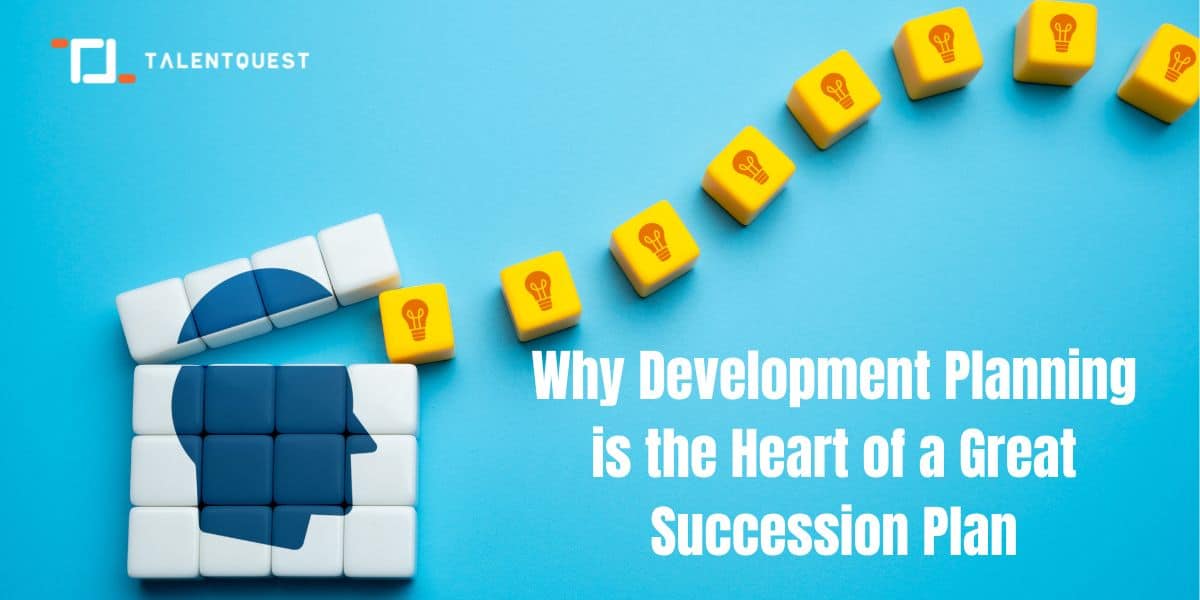
Why Development Planning is the Heart of a Great Succession Plan
When most people think of a succession plan, they often focus on picking potential leaders to take over key roles in the future. While that’s important, there’s a key part of the process that often gets overlooked: development planning. Simply identifying future leaders isn’t enough—those individuals need to be prepared for the roles they’ll eventually step into. And that’s where development planning becomes critical.
Here’s why it’s the most important piece of the puzzle when it comes to building a solid succession plan:
Closing the Skills Gap
It’s great to spot employees with potential, but without a clear development plan, they might not be ready when the time comes. A solid development plan helps them bridge the gap between their current skills and what’s needed in future leadership roles. By setting specific goals and learning objectives, employees can gradually build the competencies they’ll need to thrive.
Personalized Growth
Every employee is different, so a one-size-fits-all approach to leadership development won’t cut it. A well-thought-out development plan is customized to the individual, focusing on areas where they need to grow—whether that’s technical expertise, leadership, or a better understanding of other departments.
When employees have tailored development plans, they’re more engaged, motivated, and likely to stick around because they see the company investing in their future.
Reducing Leadership Risk
When a key leader suddenly leaves, it can throw a business into chaos if there’s no one ready to take their place. Without proper development planning, organizations might promote someone who isn’t fully prepared, which can lead to costly mistakes.
With development plans in place, potential successors are getting ready well in advance, gradually taking on more responsibility, so they’re prepared to step up when needed. This helps reduce the risk of leadership gaps and ensures smoother transitions.
Fostering a Culture of Learning
A great succession plan isn’t just about preparing for the future—it’s about creating a culture that values growth and learning. When employees know the company is committed to their professional development, they’re more likely to stay engaged and motivated. It also makes them more loyal, as they see there’s a clear path for their career advancement.
Plus, encouraging continuous learning across the organization boosts morale, as people feel they’re not just doing their current job, but growing for what’s next.
Preparing for Tomorrow’s Challenges
The business world is always changing, and the challenges future leaders face may be very different from what’s happening today. Development plans should take this into account, preparing potential leaders with the flexibility and skills to handle whatever comes next.
Instead of just training employees for their next job, you’re developing adaptable leaders who can tackle the unknown—setting the organization up for long-term success.
Aligning Growth with Company Goals
A strong development plan doesn’t just prepare employees for new roles—it also ensures their growth aligns with the company’s larger goals. By focusing on skills and experiences that directly support the organization’s strategic vision, you’re creating a leadership pipeline that’s ready to move the company forward.
In Short…development planning is what turns high-potential employees into ready-to-go leaders. It’s not enough to simply choose who will take over one day; you need to actively prepare them. By focusing on personalized growth, reducing risks, and aligning employee development with company goals, development planning becomes the key to building a succession plan that actually works. And in the end, it’s what will keep your organization thriving well into the future.
